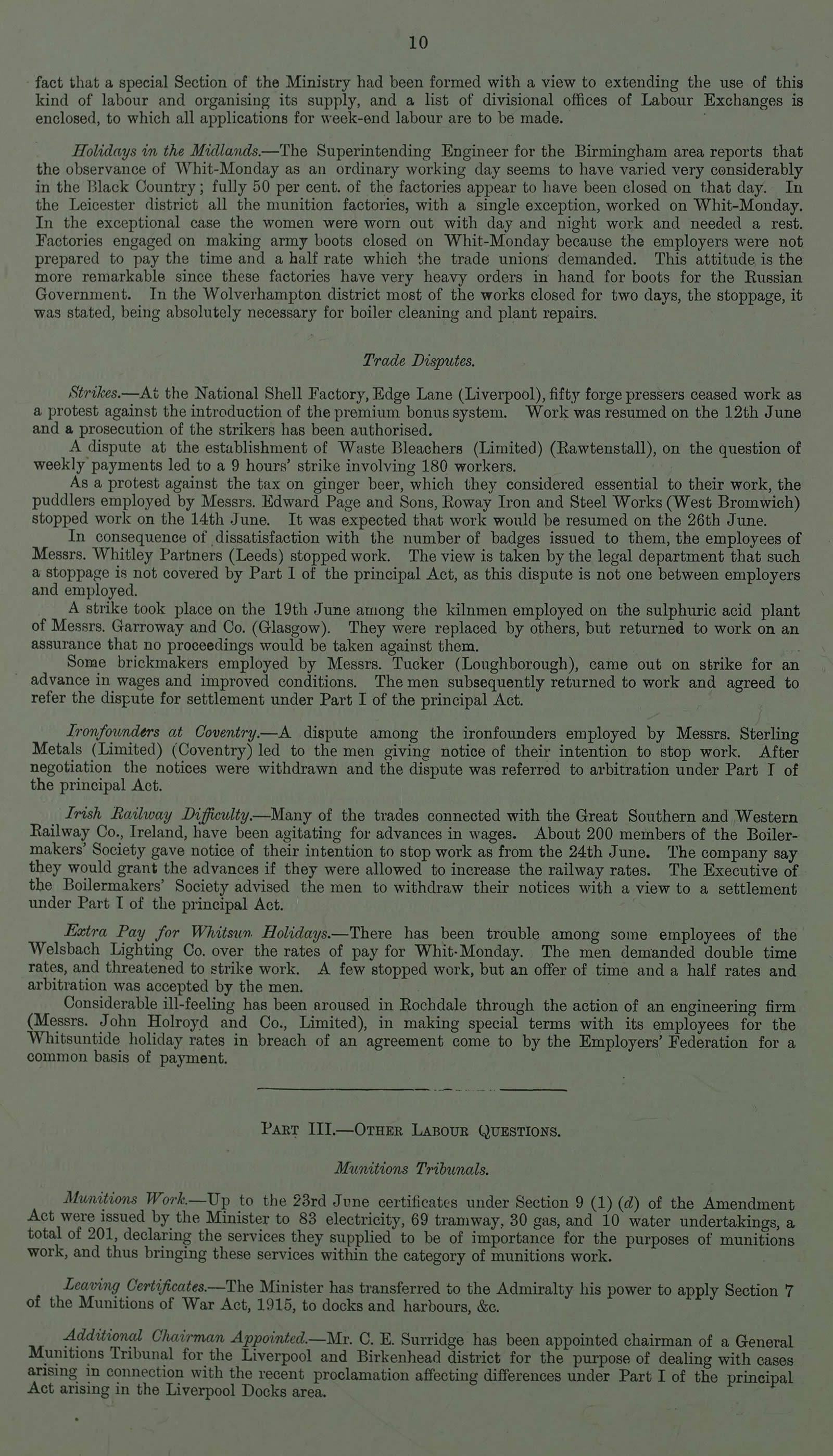Strike action
Strike action, both large- and small-scale, was by no means uncommon during the First World War. The government had powers under the Defence of the Realm Act (DORA) to deal with labour unrest, and was eager to negotiate and prevent delays to the production of products vital to the war effort.
At the Vickers gun factory in Cumbria in March 1917, engineers protested against changes to their wages that they believed would leave them out of pocket. By April, the strike had not been resolved and government was ready to arrest the shop stewards. Though the strike was eventually resolved, its consequences were very serious for the war effort: it had caused a 2-3 week delay in guns being sent out from Barrow, delaying the delivery of 15 howitzers and as many as 42 other pieces of artillery. In the First World War the government had to focus on both maximising the productive capability of the country, but also maintaining decent industrial relations.
Strikes in the First World War were, as today, usually about wages, but records from the Ministry of Munitions show a wide and sometimes surprising range of causes for industrial action. One set of workers at Roway Iron and Steel Works went on strike in protest against a tax levied on ginger beer, a drink ‘considered essential to their work’.
At a factory in Newcastle, two female workers were dismissed for wearing trousers outside the factory gates, prompting the 17 other women working at the firm to go on strike and subsequently be dismissed. They received some compensation after appealing to the government. There were also instances of male workers coming out of factories to strike in solidarity with female workers.
While workers in the First World War are often portrayed as patriotic and motivated by their desire to keep the country working, these examples highlight that many were also willing to exercise their rights to industrial action to protest against mistreatment and low wages.

A digest of reports on trade disputes that took place in June 1916, taken from the ‘Labour’ volume of a collection of bound weekly classified circulated among high ranking members of the Ministry of Munitions (catalogue reference: MUN 2/27)

